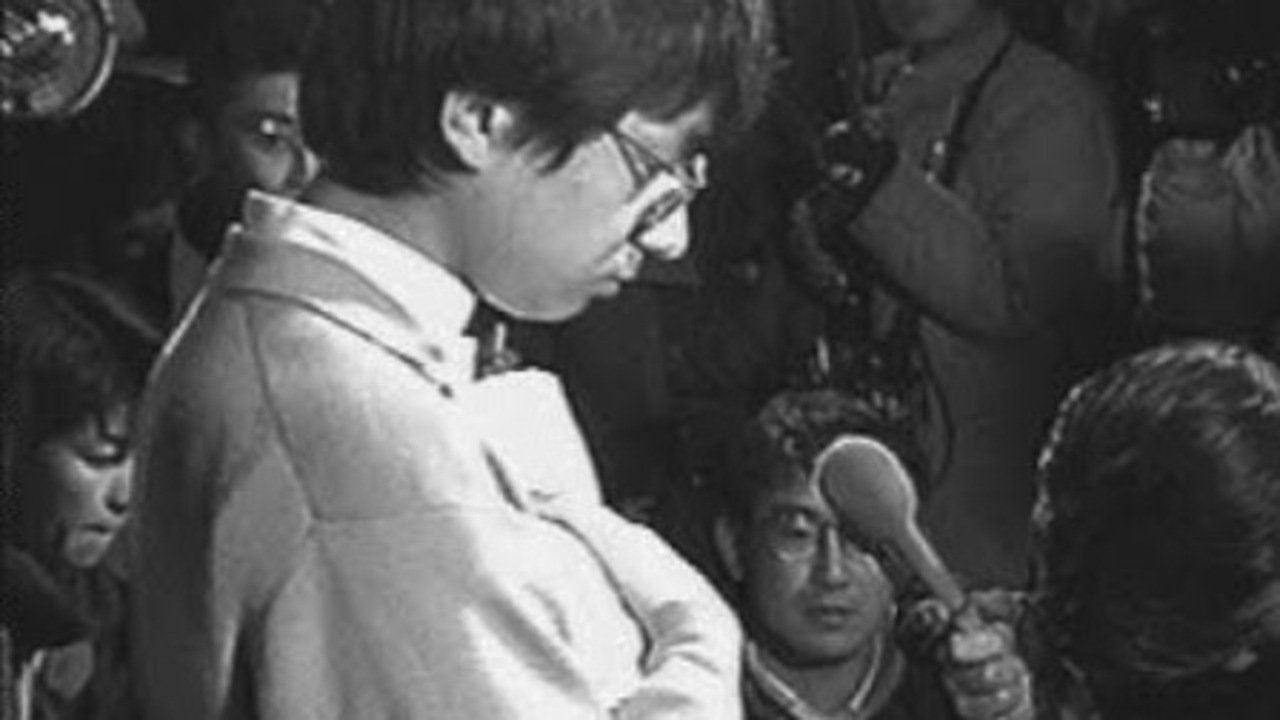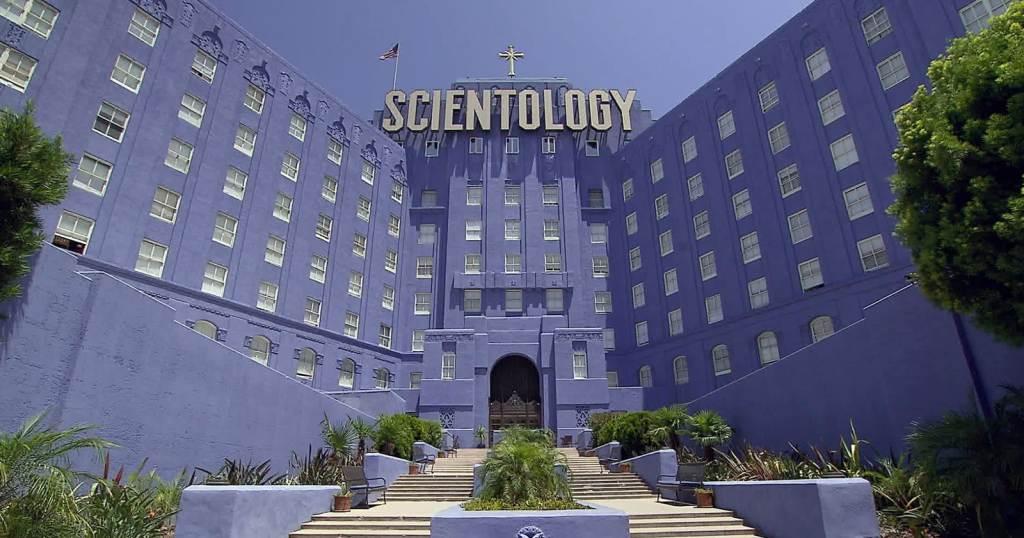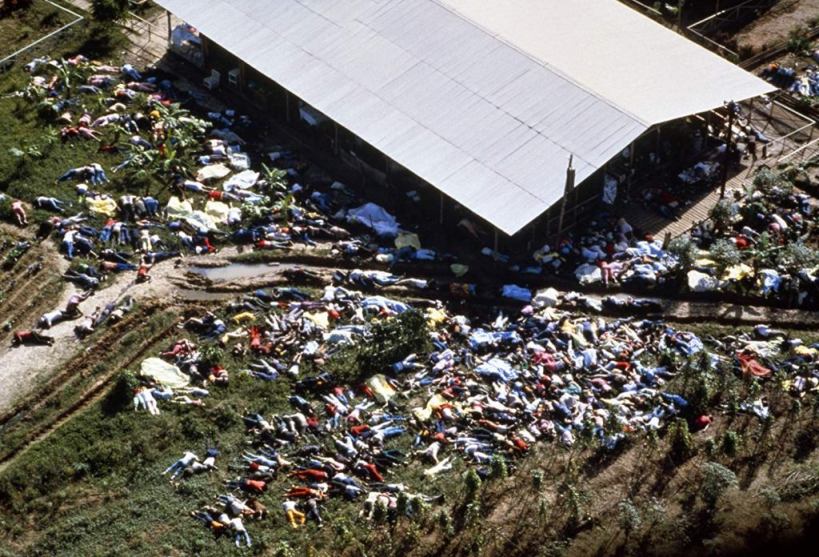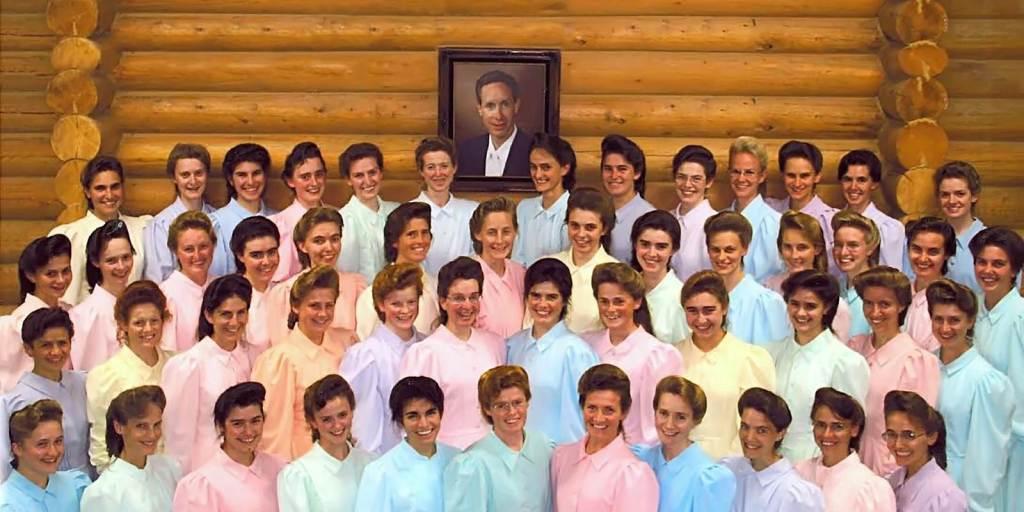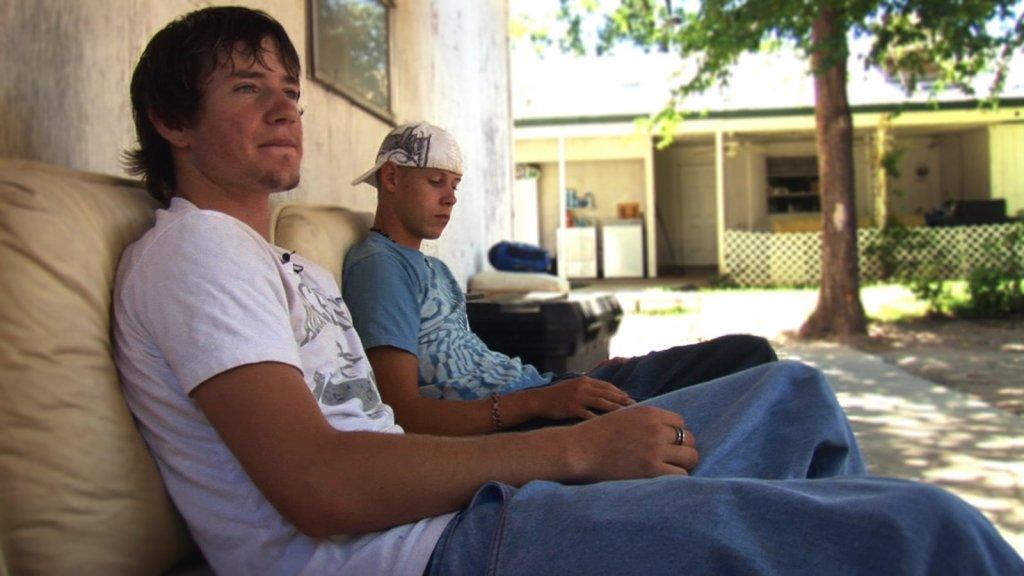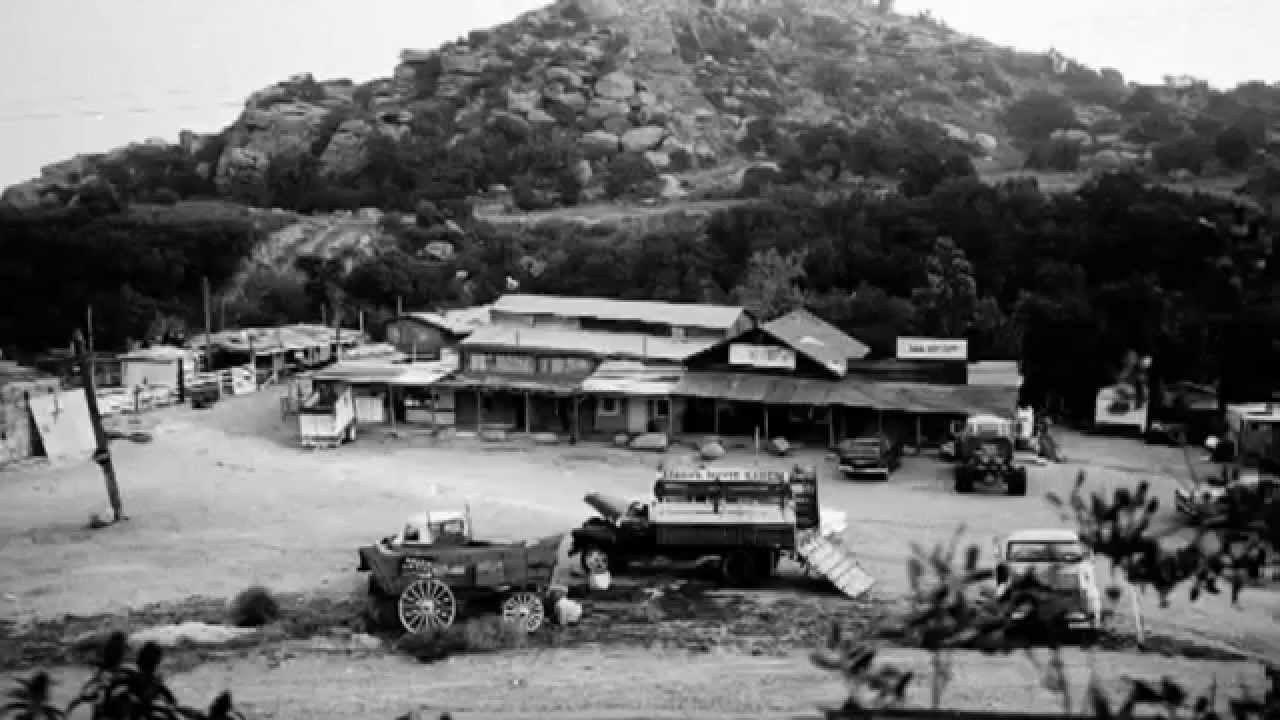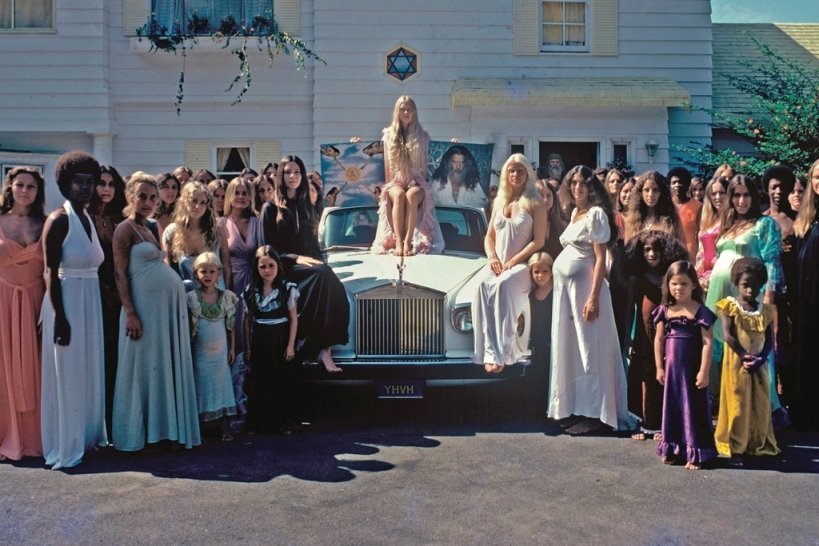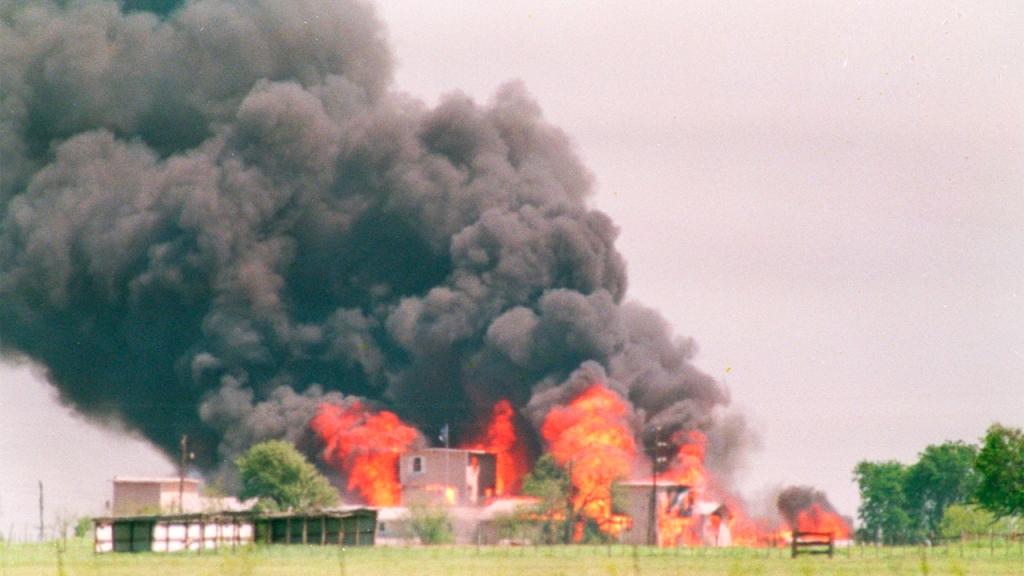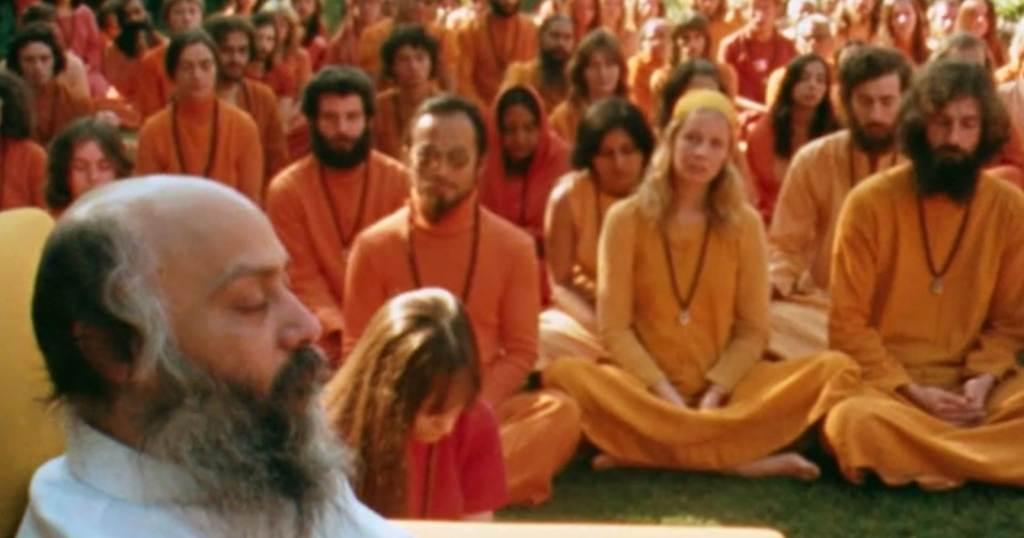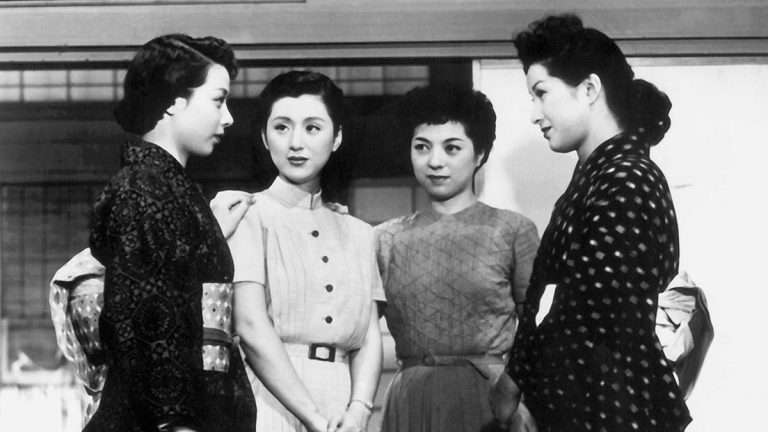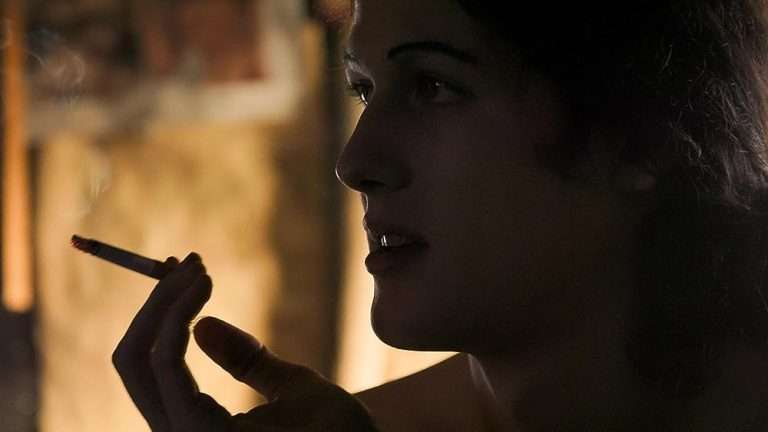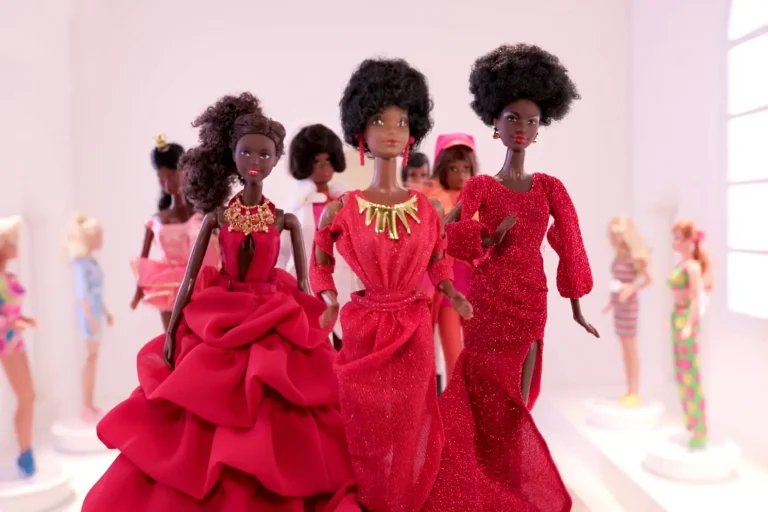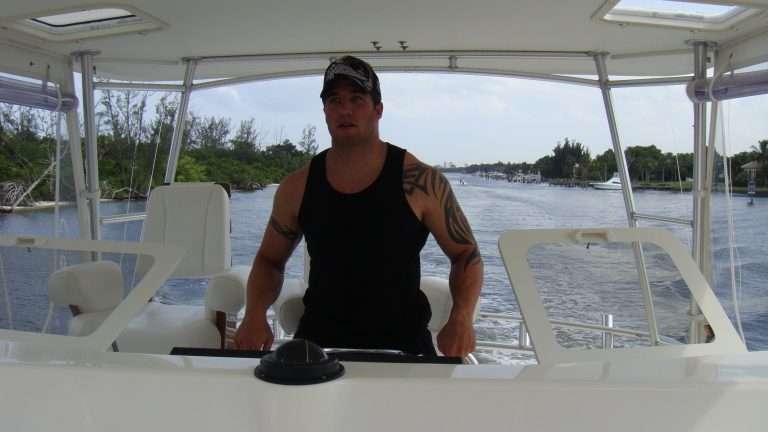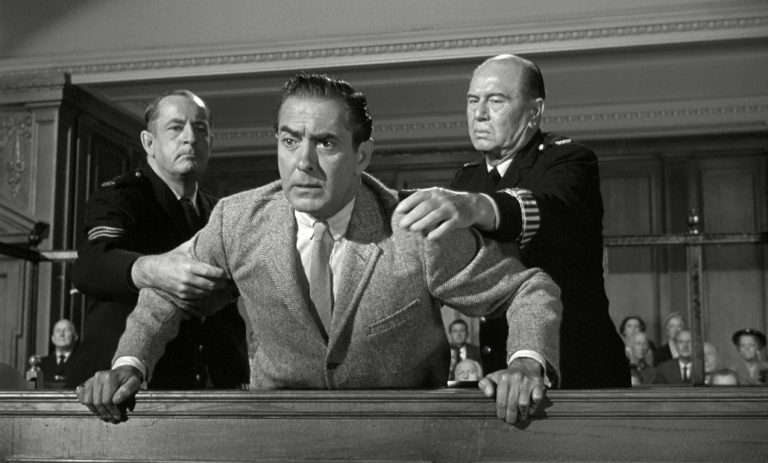Documentaries about Cults: The phenomenon of cults is an intriguing subject in our modern capitalist society. When do the movements that purport to search for love, peace, and happiness get infested by violence, corruption, and abuse? Strictly organized belief systems always present us with a set of social problems, and cults, with their more entrenched systems of control and influence, take up the exploitation of people involved to greater levels. Some will say we are all being forced to take part in a cult, that we only give it different names: religion, caste, nationalism, and so on.
A cult could be described as a microcosm of a larger authoritarian society. It starts with the psychological control an allegedly charismatic leader exerts over the followers. What follows is a promise for a transcendental experience and a period of indoctrination. Then there’s the restraint of belief system, which micro-manages one’s thoughts and actions. Despite being exploited (economically) and abused (sexually), eventually, the followers of a cult are pushed to undoubtedly accept the deification of its dangerously narcissistic leader, and they do. And it all can be a very subtle process. Moreover, the dissatisfaction with society and the rigid definition of success in life were all some of the factors that often push people to identify with and adore the cult.
Of course, humans are social animals. We desire to fit in somewhere, and we can thrive only by working together. But it’s important to be wary of sadistic charlatans offering ‘enlightenment’ in exchange for uncritical devotion. The documentaries listed below (in alphabetical order) depict the potentially harmful nature of cults to society.
1. A (1998):
Director: Tatsuya Mori
Born in March 1955, Chizuo Matsumoto was the son of a poor weaver. By the time he was 30 years old, Matsumoto had faced many failures and rejections in his life. He didn’t pass the entry-level exams to study at Tokyo University. He graduated with a diploma in Chinese traditional medicine and acupuncture. However, his business venture, which offered quick health remedies, went bust when he was charged with a felony for his fraudulent activities. Matsumoto had a large family, a wife, and six kids. He eventually decided to start teaching yoga in a single-room apartment. Matsumoto later changed his name to Shoko Asahara. Ten years later, Asahara, now aged 40, was known as the founder of Aum Shinrikyo, a religious organization that transformed into a doomsday cult. He drove around in Rolls-Royce and turned his organization into a multi-million dollar business empire (recruited 17,000 members in Japan).
Of course, Asahara didn’t just stop there. On 20 March 1995, members of Aum Shinrikyo committed an act of domestic terrorism by releasing poisonous sarin gas on the Tokyo subway system during rush hour, severely injuring 54 (some of whom later died or were brain-damaged) and affecting 1,000 more (causing temporary vision impairment). The subsequent raids on the cult compounds revealed the grand, horrific scale of activities planned by Aum. Although some of the claims were a mere exaggeration, police found huge stockpiles of chemicals to produce enough sarin to kill a huge population.
Tatsuya Mori’s documentary ‘“A” is a multi-layered, behind-the-scenes exploration set in the aftermath of these shocking events. Mori largely follows Aum’s PR spokesman, Hiroshi Araki, and has unprecedented access to Aum’s compounds. The documentary unfolds a year after the gas attacks, with the members of the cult living their dull lives, meditating, eating a bland vegetarian diet, and coming across the angry public and media picketing the premises. Mori’s perspective is interesting because he doesn’t focus on the details surrounding the gas attacks, which might have been the primary topic of discussion in Japanese media at the time. It’s a bit frustrating at times. But Mori’s documentary shines a light on parts of Aum’s story that may not make it to the prime-time news.
Related Books: ‘The Cult at the End of the World’ (by David E. Kapland & Andrew Marshall) and ‘Underground’ (by Haruki Murakami)
2. Going Clear: Scientology and the Prison of Belief (2015)
Director: Alex Gibney
Ron Hubbard was a pulpy sci-fi author who took the easy way out of establishing a billion-dollar business: religion. He founded the Church of Scientology in 1954, which, over the years, covered itself under the aura of deceptions and mystery. But starting from the early 2000s, the Church’s dark secrets came under the spotlight. Its former members began to give a clear picture of the alleged intimidation, mind control, and abuse. The most damning account of Scientology came in 2013 with the release of Lawrence Wright’s book, “Going Clear.” The book was made into a documentary by Oscar-winning documentarian Alex Gibney (“Taxi to the Dark Side,” “Enron,” “Zero Days,” etc).
As expected, the doc explores how the Church gained popularity by cultivating Hollywood stars like John Travolta and Tom Cruise. Gibney interviewed some high-level Scientology members who were more than willing to denounce it. Marty Rathbun, who was the right-hand man to Hubbard’s successor, David Miscavige, and who left the Church in 2004, gives an unsettling account of white-collar crime carried out in the name of a belief system. The most fascinating subject of the documentary, however, is Paul Haggis, the Oscar-winning screenwriter and a Scientology member for 34 years. More than offering a disturbing chronicle of the Church’s blackmailing, fear-mongering, and blatant profiteering tactics, Gibney’s “Going Clear” questions how these intelligent, educated people bought all this gibberish as the path to enlightenment, making it one of the must-see documentaries about cults.
Our Review: Going Clear – Scientology and the Prison of Belief [2015]
3. Holy Hell (2016):
Director: Will Allen
Buddhafield was a little-known West Hollywood cult that was founded in the 1980s by Jamie Gomez, who went by the name Michele and is now known as Andreas. Buddhafield seemed to exude the picture of a perfect commune with young people dancing around and its leaders’ mixed philosophy focused on physical fitness and healthy living. Michele or Gomez was a former small-time gay porn star who also trained as a hypnotherapist. His commanding figure also cultivated a greater influence upon his devoted followers. The tyrannies and sexual abuse followed later when he overdosed on his followers’ veneration.
Will Allen’s “Holy Hell” chronicles the director’s own experiences with the cult. Allen, who left his family after coming out as gay, first encountered Buddhafield in 1985. He was happy to live with like-minded, creative young people (for nearly 22 years). He became the group’s in-house videographer, and that footage forms the crux of this cautionary tale. Allen sprinkles his footage with present-day interviews of other longtime group members to provide a detailed, intimate insider’s perspective. Though a bit of an objective look would have made this documentary more interesting, “Holy Hell” does show how people well indoctrinated into a subculture may never discern the point at which it turns abusive and insidious.
Related Read: A Certain Kind of Silence [2019] — Zero Love in 12 Tribes Cult
4. Jonestown: The Life and Death of Peoples Temple (2006)
Director: Stanley Nelson
1960s America was the well-spring of various movements that believed in revolutionary social changes. The multi-cultural, interracial, allegedly socialist church, The Peoples Temple, founded by the charismatic Reverend Jim Jones, seemed to provide answers to the haunting political and spiritual incertitude of the times. People were drawn to Jones’ anti-war, anti-racism, and anti-capitalist messages. Despite his vague philosophy and strange behaviors, Jones was an expert at organizing and expanding his commune. The leader’s vision of a utopian commune took him and his followers to the jungles of Guyana, a small South American nation. But on November 18, 1978, the growing paranoia of Rev. Jones dictated his 918 followers (including at least 300 children) to drink the cyanide-laced drinks and commit ‘revolutionary’ suicide. This unimaginable tragic event is considered one of the largest mass killings outside of warfare and terrorist attacks.
Stanley Nelson’s remarkable documentary “Jonestown: The Life and Death of Peoples Temple” examines in-depth how the movement, initially laced with good intentions and idealism, became prey to Jones’ deadly, damaged ego. Director Nelson reconstructs the story of Peoples Temple through rare footage and recordings, which were declassified by the CIA around that time. The documentary also takes a level-headed approach to comprehending how Jones rose to a greater position and how he kept his parishioners under his spell. The last half-hour of the film is perhaps tough to watch as Nelson, in a non-exploitative manner, offers an exact account of what happened inside Jonestown on November 18, 1978.
Related Books ‘The Road to Jonestown: Jim Jones and Peoples Temple’ (by Jeff Guinn)
5. Prophet’s Prey (2015):
Director: Amy Berg
The Fundamentalist Church of Jesus Christ of Later-Day Saints (FLDS) is a radical offshoot of Mormonism, which refused to renounce Polygamy. The Church was taken down the darker path by its former leader, Warren Jeffs, son of Rulon Jeffs, who assumed leadership between 1986 and 2002. Even before his father’s death, Warren had set off things to tighten the control of its members by restricting education, banning media and music, and, most importantly, confining them to geographically isolated areas.
The top leaders of the sect also seized all their working members’ money and started up a vast network of wealthy companies. When Warren became the de facto leader of FLDS, only he had the power to grant or approve marriages within the community. Many of the girls aged 13 or 14, brought up in ignorance of the outside world, were forced to take up older husbands, usually men with more money.
Similar Read: 20 Must-See Documentaries of 2016
At times, he banished the rebelling members by ‘confiscating’ their wives and ‘assigning’ them to new husbands. Warren himself had at least 90 wives, some of whom were wives of other church members. Based on private investigator Sam Brower’s disturbing book of the same title, director Amy Berg in “Prophet’s Prey” chronicles how this rapist, tyrant, and pedophile, now serving life plus 20 years, operated for years largely unquestioned by the government. Although Warren is now behind bars, his methods continue to exert control over the community, which has now silently transgressed national borders into Mexico and Canada (and he can pull strings from his prison cell).
Amy Berg also focuses on the determined efforts of two individuals who brought national attention to Warren Jeffs: one was Mr. Brower, who wrote a detailed book about Jeffs’ case and the inner workings of FLDS; the other is Jon Krakauer, whose best-selling non-fiction, Under the Banner of Heaven exposed the horrifying nature of fundamentalist Mormonism. Berg’s documentary leans a bit too much on the bone-chilling account of Jeffs’s exploitation. Still, this is an enraging study of a deranged prophet and his systemic abuse.
6. Sons of Perdition (2010)
Directors: Tyler Measom & Jennilyn Merten
If “Prophet’s Prey” takes a detailed look at the horror unleashed by FLDS leader Warren Jeffs on his sequestered members, Tyler Measom and Jennilyn Merten’s “Sons of Perdition” deals with the post-cult lives of three teenagers (Sam, Joe, and Bruce) who were exiled from the FLDS (Fundamentalist Latter-Day Saints). These three boys have no access to their families and no financial support whatsoever. Measom and Merten’s approach isn’t interview-driven but (unobtrusively) observes the boys as they attempt to fit in with the outside world.
All three have previously had no contact with the outside world, and even the concept of recreation – books (apart from scriptures), TV, and radio — is new to them. Some of the female exiles explain why the boys are let out easily, whereas the young women of FLDS are guarded fiercely (which is discussed in detail in Sam Brower’s book and Amy Berg’s documentary). Overall, “Sons of Perdition” offers a strong and different perspective on comprehending the abusive power of FLDS.
7. The Six Degrees of Helter Skelter (2009)
Director: Michael Dorsey
On August 8 & 9, 1969, the ‘Manson Family,’ a group of followers of cult leader and criminal Charles Manson, murdered in cold blood seven people, including the pregnant actress and wife of film-maker Roman Polanski, Sharon Tate. It is said that Manson often spoke to his ‘family,’ comprised mostly of young women, about an apocalyptic race war – which he referred to as ‘Helter Skelter’ – and the frenzied killings in Hollywood were done to incite a race war. Of course, there are different theories as to why the killings were committed (some disturbingly pragmatic than the belief in ‘race war’) or on who controlled whom. Nevertheless, Charles Manson is the infamous American bogeyman (although he didn’t actually kill the seven) still haunting the nation’s collective psyche more than 50 years after the killings (or at least continues to capture the attention of American filmmakers and writers).
There have been many movies and documentaries on this particular subject, from the Oscar-nominated documentary “Manson” (1973) plus the true-crime drama “Helter Skelter” (1976) based on Prosecutor Vincent Bugliosi’s book to the Tarantino film “Once Upon a Time in Hollywood.” Yet Michael Dorsey’s “The Six Degrees of Helter Skelter” offers a fascinating albeit slightly exploitative take on the Tate/Labianca murders. The documentary, led by Hollywood historian and tour guide Scott Michaels, follows the footsteps of the Manson family, visiting more than 40 locations related to the infamous August 1969 killings.
Dorsey’s documentary not only focuses on the detailed knowledge of Michaels on the Manson case but also explores Michaels’ own fascination or obsession with the crime (the man shows off some of his unique death memorabilia). This may not be the right documentary to watch if you have never heard of Charles Manson, but those who have already read about the Manson family can find this to be a distinct take on one of the grisliest chapters in modern American history.
Related: ‘Manson’ (by Jeff Guinn) and the novel ‘The Girls’ (by Emma Cline)
8. The Source Family (2012):
Directors: Marie Demopoulos & Jodie Willie
It is generally alluded that the hippie movement ended with the Manson family murders in August 1969. However, some of the impressionable young hippies of the early 1970s followed the megalomaniac and miracle-performing guru, Father Yod. Born James Edward Baker, Father Yod (who served in the Marine Corps during World War II) armed himself with the knowledge of esoteric spiritual teachings and was a follower of Yogi Bhajan, an American-Sikh spiritual leader. By the late 1960s, Baker opened Source restaurant in Los Angeles, which served organic vegetarian food (celebrities like John Lennon and Brando were said to be the restaurant’s regulars). Then, he metamorphosed into a cult leader, promising a life of pleasure, wisdom, and love.
Maria Demopoulos and Jodie Willie’s “The Source Family” documents the ‘family’ unit of Yod by relying on archival footage and interviewing ex-members. The Source Family wasn’t the source of any tragic killings or suicides, and for the large part, the documentary portrays Yod as a strange but not sinister person. Although Marie and Jodie touch little about the emotional trauma and sexual abuse caused by Yod, there have been numerous painful accounts of the leader’s authoritarian attitude, especially towards women. Although the cult dissipated after the death of Yod (in 1975), his psychological and physical abuse of power has scarred his victims for life.
Related Read: Midsommar [2019]: A Voluptuous Day Terror
9. Waco: The Rules of Engagement (1997)
Director: William Gazecki
William Gazecki’s outstanding documentary is an odd one out on this list. After seeing “Waco: The Rules of Engagement,” one might hesitate to use the word ‘cult’ to describe the Branch Davidians, who, at the time of the deadly ATF siege in 1993 (near Waco, Texas), were painted as gun-toting lunatics waiting to unleash their madness on America (the 51-day siege ended with an FBI assault which led to the killing of 76 Branch Davidians). David Koresh, the leader of Branch Davidians, was accused of molesting children. He is said to have fathered multiple children by different ‘wives’ and is clearly a toxic, manipulative leader. And Branch Davidians had some weird, creepy beliefs.
But this documentary paints a grim portrait of trigger-happy & publicity-seeking American law enforcement officials who are proven to have slandered the Branch Davidians without backing it up with enough evidence. Adding further to the dismay is the way these institutions come together (during trial) to cover up their heinous crimes.
Roger Ebert, on reviewing the documentary, calls the siege ‘a tragedy caused by uniformed boys with toys’. “Waco: The Rules of Engagement” asks some serious questions about the government-sanctioned brutality against the ones who have strayed from the norm, making it one of the greatest documentaries about cults. Is it unlawful to have strange religious beliefs? Why’s the media intent on stoking the fury of the public (through its artful use of language) rather than getting to the bottom of the truth? William Gazecki backs up his viewpoint with extensive evidence (that includes expert testimonies and distressing audio & video footage of the aforementioned event). Eventually, this is an unforgettable look at how the US government sent tanks to wage war on its own people and covered up the premeditated massacre by categorizing them as ‘crazed cultists’.
10. Wild Wild Country (2018)
Directors: Chaplain & Maclain Way
Rajneesh, aka Osho, was an influential spiritual guru who had thousands of followers in his native country (India) and in the West. Netflix mini-series doc “Wild Wild Country” by Chapman and Maclain Way, however, isn’t about Osho, his doctrines (sprinkled with Eastern mysticism), or the dynamic meditation he preached. In fact, the riveting series is centered on Ma Anand Sheela, the ruthless and self-aggrandizing personal secretary to Bhagwan Rajneesh. In 1981, Rajneesh purchased, with the help of Sheela, a huge ranch in the small town of Antelope, Oregon. Later, the Rajneeshes or ‘sannyasins’ tried to establish Rajneeshpuram, a utopian commune where people who gave up their wealth and livelihood (and even families) came together to create an ‘oasis’ in the middle of a desert.
“Wild Wild Country” tracks down how the situation in Rajneeshpuram turned for the worst, leading to heated confrontations with the locals, firebombings, accumulation of assault rifles, attempted murders, and mass poisoning. At the heart of all these conflicts is Sheela (interviewed at length in the doc), who embraces extreme methods to tackle her enemies, including the US government. Directors Chapman and Maclain Way explore in detail the metamorphosis of the meditation movement into a cult and its later ‘stranger-than-fiction’ transgressions. Perhaps the series is so invested in the story of corruption that it doesn’t examine the culture that pushed youngsters toward Rajneesh or what day-to-day life was like in Rajneeshpuram. Yet, this is a fascinating expose of the hypocrisy and hubris surrounding a cult and one of the best documentaries about cults.

